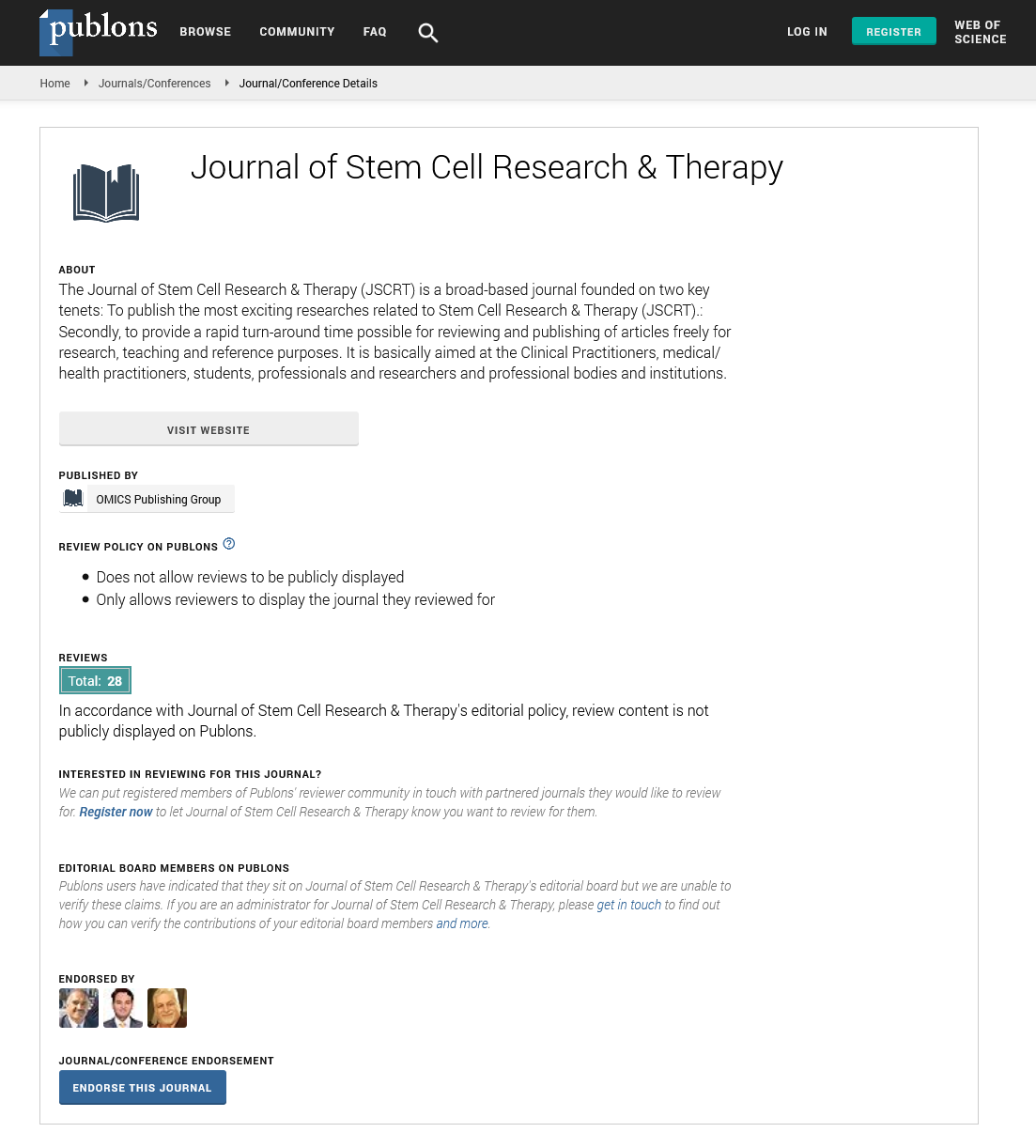Indexed In
- Open J Gate
- Genamics JournalSeek
- Academic Keys
- JournalTOCs
- China National Knowledge Infrastructure (CNKI)
- Ulrich's Periodicals Directory
- RefSeek
- Hamdard University
- EBSCO A-Z
- Directory of Abstract Indexing for Journals
- OCLC- WorldCat
- Publons
- Geneva Foundation for Medical Education and Research
- Euro Pub
- Google Scholar
Useful Links
Share This Page
Journal Flyer

Open Access Journals
- Agri and Aquaculture
- Biochemistry
- Bioinformatics & Systems Biology
- Business & Management
- Chemistry
- Clinical Sciences
- Engineering
- Food & Nutrition
- General Science
- Genetics & Molecular Biology
- Immunology & Microbiology
- Medical Sciences
- Neuroscience & Psychology
- Nursing & Health Care
- Pharmaceutical Sciences
Abstract
History of Development and Regulations for Regenerative Medicines in Japan
Hanayuki Okura and Akifumi Matsuyama
Regenerative medicinal products were dealt with fewer than two categories only, pharmaceutical products and medical devices in the previous Pharmaceutical Affairs Law (PAL). Because regenerative medicinal products could not fully fit within the conventional regulatory contexts for pharmaceuticals, they were less available to the public. To overcome this issue, the Japanese parliament has legislated Laws for the Promotion of Comprehensive Measures to Facilitate Swift Distribution and Safe Use of Regenerative Medicines available to the Public (Regenerative Medicine Promotion Act). The Japanese government has changed the regulatory framework for regenerative medicinal products, 1) upgrading of directives for human stem cell-based clinical research to the Law concerning the Establishment of Safety of Regenerative Medicine Materials (Regenerative Medicine Safety Assurance Act), and 2) setting a new category for regenerative medicinal products in the Pharmaceutical and Medical Device Act (PMD Act), the latest revised PAL. It is noteworthy that the PMD Act permits expedited, conditional, and time-limited marketing approval as an exception for non-homogeneous regenerative medicinal products when efficacy is anticipated while safety is demonstrated. With these revisions of the regulatory framework for regenerative medicinal products, two tracks have become available for societal contribution to regenerative medicines. Japan is the only country where society has these two tracks, and social experiments on regenerative medicines in spectacular proportion are launched for societal contribution. We review here the history of the struggle to accelerate the availability of regenerative medicinal products for patients in Japan.

